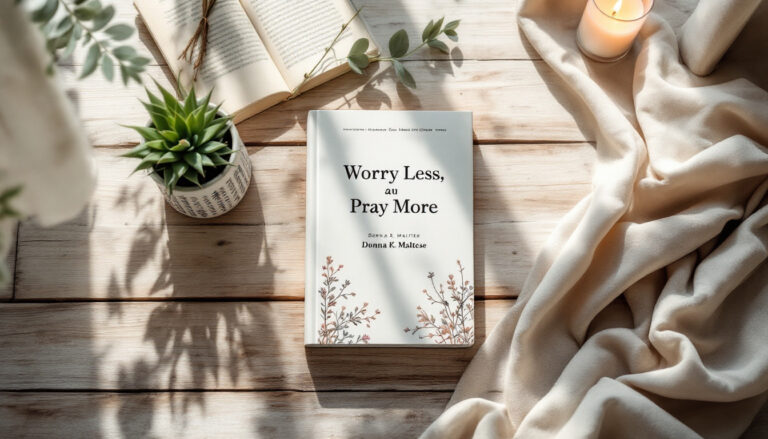Honest Review of ‘The Case for Christ’ by Lee Strobel: What to Expect
What happens when a hard-nosed journalist sets out to disprove Christianity? The Case for Christ by Lee Strobel takes readers on that journey. Strobel, once a skeptic, dives into historical evidence and expert interviews to examine the key claims about Jesus. The book overlays a courtroom-style investigation with a journalistic flair, making complex theological ideas more accessible. Whether you’re exploring faith, searching for answers, or just curious about the arguments, this review will break down what the book offers and whether it holds up to scrutiny.
Who is Lee Strobel and Why This Book Matters
Lee Strobel’s book, The Case for Christ, is more than just a collection of theological musings. It’s a product of his personal journey, professional skills, and a profound examination of faith. For anyone wrestling with big questions about Christianity, understanding Strobel’s background and purpose adds significant meaning to the book.
Journalist-Turned-Christian Author
Lee Strobel began his career as an investigative journalist, earning accolades as the legal editor of The Chicago Tribune. His professional life revolved around uncovering facts, finding inconsistencies, and questioning everything. So when he approached Christianity, he tackled it the same way—like an investigative assignment.
This background significantly shaped the structure of The Case for Christ. The book operates much like one of Strobel’s journalistic investigations, complete with expert interviews, cross-examinations, and evidence evaluations. His ability to simplify complex ideas for a general audience is a product of his newsroom days. Strobel wasn’t just writing; he was building a courtroom-like argument through storytelling, making his book compelling for both intellectual skeptics and general readers. Learn more about his journey here.
The Personal Journey Behind the Book
What led Strobel, a self-professed atheist, to explore Christianity? It was personal. His wife’s surprising conversion to Christianity became the spark. Troubled by her newfound faith and its implications for their relationship, Strobel decided to investigate Christianity with the aim of disproving it. However, his rigorous examination led him to an unexpected conclusion: the claims of Christianity, particularly regarding Jesus’ divinity and resurrection, were more credible than he anticipated. Strobel’s story isn’t just academic—it’s deeply human.
In that sense, The Case for Christ isn’t just about arguments for or against faith. It’s about a man grappling with change, challenging his biases, and confronting transformative truths. His honesty about his initial doubts and his ultimate transformation makes the book relatable and authentic. You can explore more about this transformation in interviews and biographical sources like this one.
Why Readers Should Care
Why should you invest your time in this book? Because it bridges the gap between skeptics and believers in a way few other works do. For skeptics, it offers a structured investigation into Christianity that’s backed by evidence, not just personal feelings. For believers, it provides intellectual tools to strengthen their faith and engage in thoughtful conversations with others.
Strobel breaks down barriers between faith and reason, making Christianity accessible without oversimplifying its depth. The book encourages reflection on life’s biggest questions: Is there a God? Did Jesus really rise from the dead? Is the Bible reliable? Whether you’re looking for answers or just a better way to understand the Christian perspective, this book meets you where you are. Dive into its significance as a work of apologetics.
In sum, The Case for Christ isn’t just a book; it’s an invitation to think deeply, challenge assumptions, and engage with Christianity on an intellectual level.
Core Themes and Structure of ‘The Case for Christ’
Lee Strobel’s The Case for Christ is a fascinating blend of investigative journalism, legal analysis, and theology. It’s structured to walk the reader through a logical, evidence-based approach to Christianity, presented in an accessible and engaging way. With interviews and expert analyses, it addresses critical questions about the faith. Below, we’ll break down how Strobel achieves this through his unique methods and insightful content.
Presenting Christianity Like a Court Case
Strobel utilizes a distinct legal framework to approach the arguments for Christianity. He tackles the subject as though he were in a courtroom, dissecting the evidence and challenging it rigorously. Each chapter presents a “case” that Strobel examines by interviewing experts, much like cross-examining witnesses.
Strobel doesn’t settle for weak arguments. He raises tough questions, exploring issues from the historical reliability of the Gospels to the physical resurrection of Jesus. For instance, he grills scholars about the textual integrity of the Bible, compares their views with opposing arguments, and probes evidences like a true investigative journalist. This courtroom analogy makes heavy subjects feel interactive and keeps the reader engaged, as one might be during a courtroom drama. Read more about his approach here.
Key Sections and Evidence Discussed
The book is carefully divided into sections, each delving into critical components of Christianity. These include:
- Examining the Record: Strobel begins by questioning whether the New Testament Gospels are historically reliable. Are they credible accounts of Jesus’ life, or mere fabrications? His investigation covers everything from textual consistency to the archaeological context.
- Analyzing Jesus’ Identity: Next, he focuses on Jesus’ claims to divinity. Did Jesus truly see Himself as the Son of God? Strobel confronts this head-on with scholars well-versed in early Christian history.
- The Resurrection: One of the book’s most pivotal sections investigates the resurrection. Using medical, historical, and psychological evidence, Strobel pieces together arguments to determine whether Jesus’ resurrection holds up under scrutiny. He presents tangible and circumstantial reasoning to argue for this cornerstone of Christian belief. For a deeper breakdown of these sections, you can explore a summary here.
- The Miracles: Lastly, Strobel evaluates Jesus’ miracles. He not only assesses whether they happened but also what implications they carry for modern faith.
Each chapter builds on the one before, gradually leading the skeptical reader toward Strobel’s conclusion. It’s a structured journey that feels like solving a mystery step by step.
The Experts Behind the Evidence
What makes The Case for Christ truly compelling is the array of experts Strobel interviews. He doesn’t rely solely on his own interpretations but opts to engage with theologians, historians, medical doctors, and archaeologists. These aren’t just any experts; they are leading scholars in their respective fields.
For instance:
- Strobel consults Dr. Bruce Metzger, a renowned scholar on New Testament reliability, to understand the authenticity of Gospel manuscripts.
- Archeologists provide insights into the cultural and historical context of Jesus’ time.
- Medical professionals weigh in on the plausibility of crucifixion and resurrection from a physical standpoint.
This diversity of expertise gives the book depth and authority. Strobel succeeds in presenting a multifaceted defense for Christianity without it feeling biased because each claim is backed by credible expert testimony. Learn more about the scholars he spoke with here.
By systematically questioning these experts, Strobel ensures his findings are rooted in facts rather than unsupported beliefs. As a result, his argument feels thorough and authentic, appealing to readers who might otherwise dismiss religious claims.
In conclusion (but no final summary here!), Strobel’s ability to blend investigative rigor with accessible storytelling makes The Case for Christ a unique work with significant insights into Christian apologetics.
Strengths of ‘The Case for Christ’
In The Case for Christ, Lee Strobel brings his investigative journalism background to a deeply theological pursuit, leading to a book that has resonated with both Christian believers and skeptics. Let’s explore its standout elements that contribute to its popularity and effectiveness.
Clear and Logical Presentation
One of the hallmarks of Strobel’s work is his ability to make complicated arguments understandable to the average reader. Using a conversational tone and a courtroom-like narrative, Strobel methodically addresses questions like: “Can we trust the Gospels?” and “Did Jesus truly rise from the dead?” Through his step-by-step breakdown, he mirrors a journalist piecing together evidence for a front-page story.
This approach ensures readers aren’t overwhelmed by theological or academic jargon, making heavy topics like textual criticism and historical investigations feel surprisingly approachable. For instance, when debating the reliability of the New Testament, Strobel employs analogies and everyday comparisons, helping readers grasp dense information in digestible portions. By interviewing scholars and summarizing their insights in plain language, Strobel keeps the tone engaging and accessible, which is undoubtedly one of the book’s greatest strengths. You can find more about why Strobel’s writing style connects with readers here.
Faith-Strengthening Material for Christians
For Christians eager to reinforce their belief system, The Case for Christ offers a trove of intellectually satisfying material. Strobel addresses common criticisms of Christianity and presents substantial evidence in response, providing readers with tools they can use in their own faith journeys or discussions with others.
The book is often recommended in small group settings and Bible studies because it not only argues for the validity of Christian teachings but also fosters personal reflection. By questioning skeptics’ doubts, Christians may feel more confident navigating conversations around faith. For example, the medical evidence and historical framework Strobel outlines concerning the crucifixion and resurrection are compelling pieces often cited by readers who feel their faith is emboldened after reading. Curious about how this book has helped others strengthen their faith? You can find personal testimonials here.
A Starting Point for Curious Skeptics
While primarily focused on Christianity’s claims, The Case for Christ also serves as an accessible entryway for skeptics exploring religion. Strobel, a former atheist himself, doesn’t shy away from hard questions. In fact, the book is built around such inquiries, like whether Jesus’ resurrection holds historical weight or if scriptural accounts can truly be considered reliable.
For someone new to faith dialogue or hesitant about religion, Strobel’s journalistic style may feel less preachy and more evidence-based. The book opens with his personal story of skepticism, which humanizes the journey and helps skeptics relate to his initial doubts. While some critics argue that Strobel’s interviewees largely come from one perspective, his investigative process still introduces vital concepts to those unfamiliar with Christian apologetics. As a result, the book creates a natural starting point for exploring faith, making it an appealing read for those cautiously approaching the topic. For more perspectives on its impact on skeptics, check out reviews like this one.
By bridging the gap between intellectual inquiry and spiritual exploration, The Case for Christ remains a standout reference for anyone exploring Christianity, regardless of where they stand on belief.
Points of Controversy and Criticism
While The Case for Christ has inspired many, it hasn’t escaped criticism. Like any book tackling religious and historical topics, Strobel’s work has its share of detractors. Here, we’ll explore some of the most discussed issues among critics, centering around bias, argumentative oversimplifications, and reader reactions to its conclusions.
Claims of Bias in Expert Selection
A recurring critique suggests that Strobel’s interviews are disproportionately one-sided. The experts he consults are nearly all committed Christians, which raises questions about whether the investigation was genuinely objective. Critics argue that this creates the feeling of a courtroom trial where only the defense shows up—without a prosecutor to balance the picture.
This perceived bias has overshadowed the investigation for some readers. For example, skeptics point out that Strobel’s choice of scholars like Dr. William Lane Craig and Dr. Gary Habermas, who actively advocate Christian apologetics, may preclude a neutral evaluation of the evidence. Could the case have been more balanced if Strobel included equal representation from reputable non-Christian experts? Many feel it might have been, especially for those approaching the subject with existing doubts.
Critics have further noted that this selective approach can feel like preaching to the choir, reinforcing beliefs for Christians rather than convincing skeptical audiences. While the experts Strobel includes are well-qualified and articulate, their shared theological alignment raises valid concerns. For a detailed discussion of this critique, check out this article analyzing Strobel’s methodology.
Oversimplification of Counter-Arguments
Another frequent observation by detractors is that Strobel doesn’t fully address complex counter-arguments. While the book aims to be accessible, some critics believe essential nuances are left out. For instance, alternative historical hypotheses about Jesus’ life and resurrection—ranging from natural explanations to mythicist interpretations—receive minimal attention. Strobel often summarizes opposing views in a way that some see as reducing their credibility by default.
This has led critics to label the book as apologetics rather than true investigative journalism. They argue that Strobel frames many non-Christian perspectives as implausible without presenting them in their strongest forms. For example, some feel that his treatment of the hallucination theory—an explanation for post-resurrection appearances—lacks the depth such a complex topic deserves. If you’re curious about specific critiques related to this, you can read more in this thoughtful piece.
On the flip side, proponents of the book argue that its simplified structure helps lay readers understand faith-based arguments. But this trade-off between accessibility and rigor remains a focal point of debate for many.
Impact of Subjective Conclusions
Perhaps the most divisive aspect of The Case for Christ is how subjective its conclusions feel to different groups of readers. Many Christian audiences find Strobel’s investigative journey inspiring and relatable. However, skeptics and those from outside the Christian faith often perceive the conclusions as heavily biased toward pre-decided outcomes.
Some readers even claim the book prioritizes faith over evidence, making it less of an impartial inquiry and more of an affirmation for believers. These critiques argue that Strobel’s prior journey as an atheist-turned-believer isn’t entirely convincing for readers who expect a deeper skeptical exploration.
The reception to such subjective elements also varies based on personal beliefs. While believers often consider Strobel’s journey illustrative of faith’s transformative power, skeptics feel it lacks the neutrality they hoped for. For further reflection on these mixed reactions, take a look at this critical analysis.
In essence, how the book’s evidence resonates with you may largely depend on the perspective you bring to it. This duality keeps it highly engaging yet equally contentious for readers of all stripes.
Legacy and Cultural Impact of ‘The Case for Christ’
Few books in modern Christian literature have maintained the lasting cultural and theological influence of Lee Strobel’s The Case for Christ. What began as one journalist’s exploration of faith has grown to touch millions of lives, sparking debates, adaptations, and new waves of Christian apologetics. Below, we’ll examine how this book has carved out its unique legacy.
From Bestseller to Movie Adaptation
First published in 1998, The Case for Christ quickly gained traction, selling over five million copies worldwide. Its accessibility and investigative approach appealed to a wide audience, from skeptics seeking answers to Christians solidifying their beliefs. The book’s success reached a new milestone in 2017 with the release of a film adaptation, which brought Strobel’s story to life on the big screen.
The movie faithfully portrays Strobel’s journey, capturing his transition from atheism to faith without over-simplifying his inner conflict. In many ways, the film extends the reach of the book by taking its emotional and intellectual appeal to a more visual format. Through the lens of marital tension and personal growth, the movie fills in narrative gaps, making it more relatable, especially for those unfamiliar with Strobel’s work.
Beyond entertainment, the adaptation reinforced the idea that faith and science can coexist in modern discussions. Critics and audiences alike noted its focus on evidence-based reasoning as uniquely compelling for religious films. For reflections on how the movie impacted secular and faith communities, explore this article.
The Book’s Role in Modern Christian Apologetics
The Case for Christ has become a household name in Christian apologetics. Its structured yet personal tone positions it as a go-to resource for those defending the credibility of Christianity. Strobel’s journalistic style makes potentially dense topics—like historical evidence for Jesus or scriptural reliability—engaging and understandable to everyday readers.
Churches and study groups frequently use the book to spark meaningful conversations, often incorporating it into Bible study curricula. The accessibility of Strobel’s interviews with theologians, historians, and scientists has made apologetics feel less daunting for believers navigating difficult questions about their faith.
For Christians engaged in defending their beliefs, The Case for Christ is more than a book—it’s a tool. It equips readers with arguments and evidence to counter skepticism while inspiring confidence in the foundations of Christianity. If you’re curious about its significance in apologetics, this exploration by Ken Keathley is worth a read: Why You Should Read ‘The Case for Christ’.
Continuing Debate Among Readers and Scholars
Despite its popularity, The Case for Christ continues to evoke strong opinions. Among Christians, it’s celebrated for its ability to provide compelling evidence for the faith. Critics, however, argue that Strobel’s narrative is one-sided, favoring Christian experts while largely ignoring alternative perspectives. This book doesn’t just spark conversations—it ignites debates.
On one hand, believers find Strobel’s methodology affirming and thought-provoking. For skeptics, the book’s conclusions often raise more questions than they answer. Is it truly objective? Does its evidence stand up to scrutiny? These challenges have created a lasting dialogue between two very different audiences.
The conversation even extends to scholarly circles, where debates focus on Strobel’s handling of historical sources and interpretations of key evidence. Whether praised or critiqued, The Case for Christ remains a catalyst for ongoing discussions about faith, evidence, and belief. You can dive deeper into one scholar’s insights on its continued relevance here.
By fostering both faith and debate, The Case for Christ proves its enduring value. It occupies a unique space where intellect and belief intersect, making it one of the most discussed works in contemporary Christian thought.
Conclusion
The Case for Christ by Lee Strobel continues to spark meaningful discussions about faith, evidence, and skepticism. Its strengths lie in its investigative style, relatable narrative, and ability to make complex topics more approachable. For Christians, it offers a thought-provoking affirmation of their beliefs, while skeptics may find it a gateway to exploring deeper questions about Christianity.
Criticisms, such as claims of bias and simplified counterarguments, raise valid points that every reader should consider. Yet, these debates only add to its enduring relevance in both faith-based and secular circles.
Whether you approach it as a believer, skeptic, or curious reader, this book invites you to weigh the evidence for yourself. It’s worth the journey, no matter where you stand. What’s your verdict?







